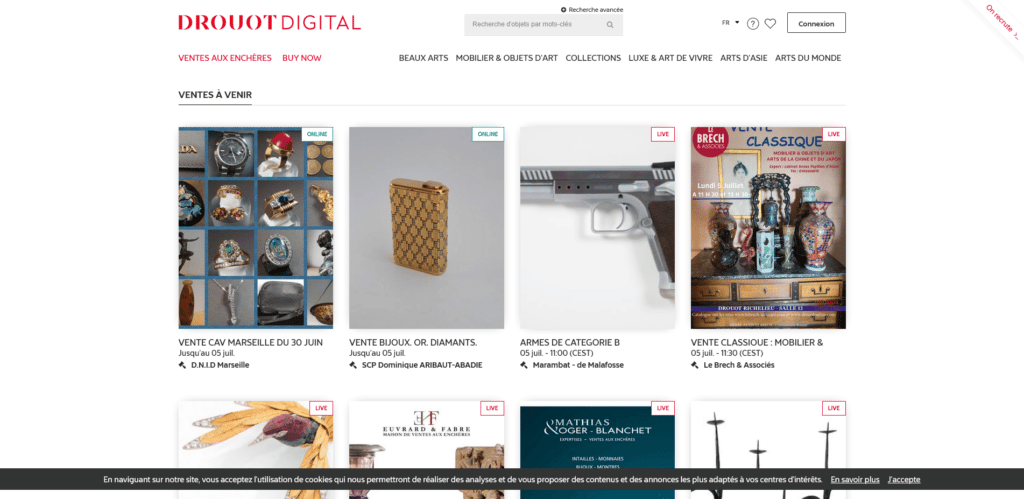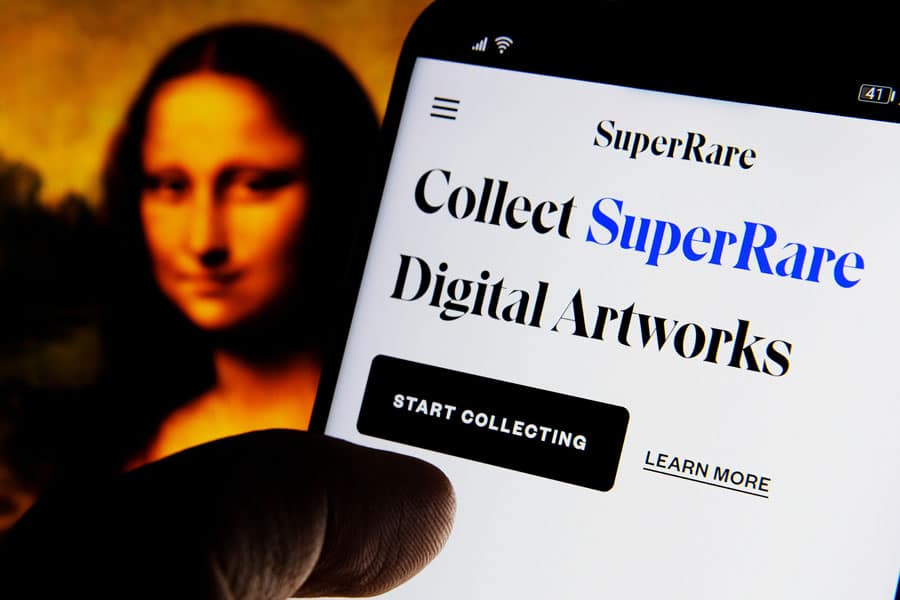If there is a sector that has been constantly evolving, it is the art sector! Art is created, viewed and distributed differently in the digital era. Apart from techniques, art has been greatly influenced by the digital world through its exposure on social networks, with the spin-off of reaching a wider audience. In these times of lockdowns, virtual exhibitions are all the rage! It is thus quite natural for the art market to follow this trend. Zoom in on the new opportunities offered by the digital transformation of this sector…
The art market of 2019 / 2020
A quick overview
The sector is no exception to the rule: the lockdown of the world’s population and the economic impact strongly affect the market of works of art, whose transaction amounts are often real investments.
But already, in 2019, the art market recorded a fall in sales by 5% across the globe (- 5% for the United States and – 10% for China!). Nevertheless, France could pride itself on swimming against the tide as it showed a 7% increase of the total market. It is in this context that the market of online art sales continues its dazzling growth year after year.
Reinventing oneself in times of lockdown
Since art galleries have been forced to temporarily close their doors, the players of the art market had to find solutions to reinvent themselves, just like museums (with, as a consequence, the need for customised communication to address the many foreign visitors as we discussed in a previous article). The digital transition has greatly capitalised on the situation to rescue galleries and auction houses, even if it did not wait for the crisis to unfold.
Given the present situation, going digital is the most effective solution to recapture the market: to survive, it is necessary to go online and dematerialise sales. Gallery owners and auctioneers thus offer artists the opportunity to find their collectors. Some art fairs are even held online. Thus, in 2020, to enable the hundred or so modern and contemporary art galleries to meet their public, Art Paris played up its digital dimension, by offering an online edition in partnership with the international art platform Artsy. Art Paris Digital enabled the purchase of a selection of more than 1000 recent works.
Also know…
Drouot, the Parisian auction house, not only offers to follow the sale in the room online but even reserves the exclusivity of certain sales to its online users.
Accentuation of a 2.0 market
The art market is no exception to the rule and is suffering as a result of the pandemic. However, the pandemic is only accelerating an already existing phenomenon. Auctions have become a dazzling success online. According to the reference site Artprice, in 2019, a historic number of 550,000 works were exchanged globally in the fine arts segment alone (which covers drawing, painting and sculpture). According to another analysis, published by Hiscox, an insurer specialising in works of art, the online sales would have generated at least 4.8 billion dollars in 2019, i.e. an increase of 4% from the previous year.
Needless to say, online sales also have their downside, like the high-profile bankruptcy of Paddle8. Having said that, the sector remains particularly buoyant online, especially for the major auction houses like Christie’s, Sotheby’s or even Philipps, which are flourishing online! Between them, these three houses made a total of 370 million dollars online in the first quarter of 2020, i.e. five times more than in 2019.
Remember: 67% of regular art buyers bought online in 2020 while this number was only 45% in 2019, according to the Hiscox 2021 study.
A new medium and a new audience
The much sought-after art is more accessible thanks to the digital medium. The entry of art into the digital world is essentially manifested in the very nature of the new trends that place a premium on aesthetics. In other words, the work of art becomes the ideal image to be displayed, shared and liked on social media and platforms! There are new technological tools emerging to showcase it, e.g. through applications and of course flourishing e-commerce websites like Artsy, Artsper, Artspace, or even EarlyWork, closely followed by major online players like Amazon. As for the traditional auction houses such as Christie’s, Drouot and Sotheby’s, they too have created online auction websites.

Art auctions on Drouot Digital
By being displayed on new media, art now meets a new audience of connoisseurs, as well as a community of buyers from across the world. Be it through a website, social network or an online gallery, going digital offers the opportunity of new international sales: larger scale and more accessible. Once reserved for wealthy insiders, these new 2.0 galleries often seek to make art accessible to the less initiated.
Remember. Social networks, modern displays of art, are now an integral part of the art world. Instagram has become the guiding light for new art buyers. According to Hiscox, 79% of art buyers, younger than 35 years, use Instagram to discover new artists.
A digital transition that is yet to be made
If the pandemic has undoubtedly accelerated the phenomenon of digital transition, digitalisation remains work-in-progress. There still are challenges to be overcome. It is easier for millennials to trust the digital sphere. Now, even if they constitute this new community of art lovers and potential buyers who are well-versed in online technology, there still exist the wealthier, but also older, collectors who are reluctant to go the digital way. The latter category still feels more comfortable having a direct connection with the works of art, and will always prefer the “old-fashioned” transactions, i.e. in the auction rooms. For the former category, it is not like the online initiatives will now replace fairs, auctions and live exhibitions. Indeed, they were drawn to doing things online (as shown by the recorded numbers), but this only happened because of the frustration they experienced during the lockdown. It is now up to the galleries to nurture the reputation of their websites and the sales platforms that represent them.
Coming to the technical challenges, they are still numerous (but conquerable) and may hinder this acceleration of the online market. First of all, the logistics related to the storage and dispatch of the works, or even the delivery periods and follow-up as well as the security of transactions, particularly through the concept of digital certificates of authenticity. The blockchain is thus a particularly relevant computer system for sharing data because it allows to secure transactions in the art market and guarantee the authenticity of works.
Even if the acceleration is genuine, there is still a long way to go!
Did you know?
Sotheby’s is a step ahead of its direct competitors: since its takeover in September 2019 by Patrick Drahi, the French media and telecommunications magnate, online sales have been at the core of its development strategy. However, in 2019, digital represented only 1.2% (42.8 million dollars) of its turnover, while from mid-March to mid-May 2020, it already had no less than 46 online sales for a generated total of 95.9 million dollars. According to Cécile Bernard, Managing Director of Sotheby’s France, 80% of Sotheby’s sales will soon be online.
The online art market is thriving, fuelled by the health crisis, but that is not all! More and more art lovers, collectors and dealers are using the Internet to discover artists and buy works. There are sizeable challenges associated with digital transition: it creates great economic prospects while reaching a new, younger and less affluent public. One of the main challenges is the trust of art lovers who buy a piece of art without directly assessing it. However, digitalisation broadens the field of possibilities and allows demystifying a sector that is often considered inaccessible.







